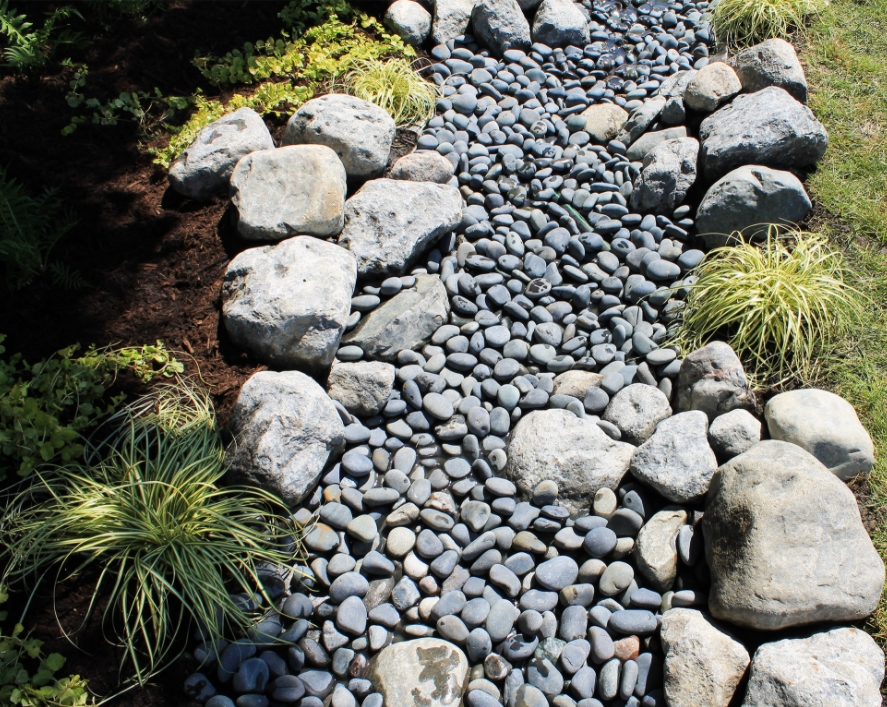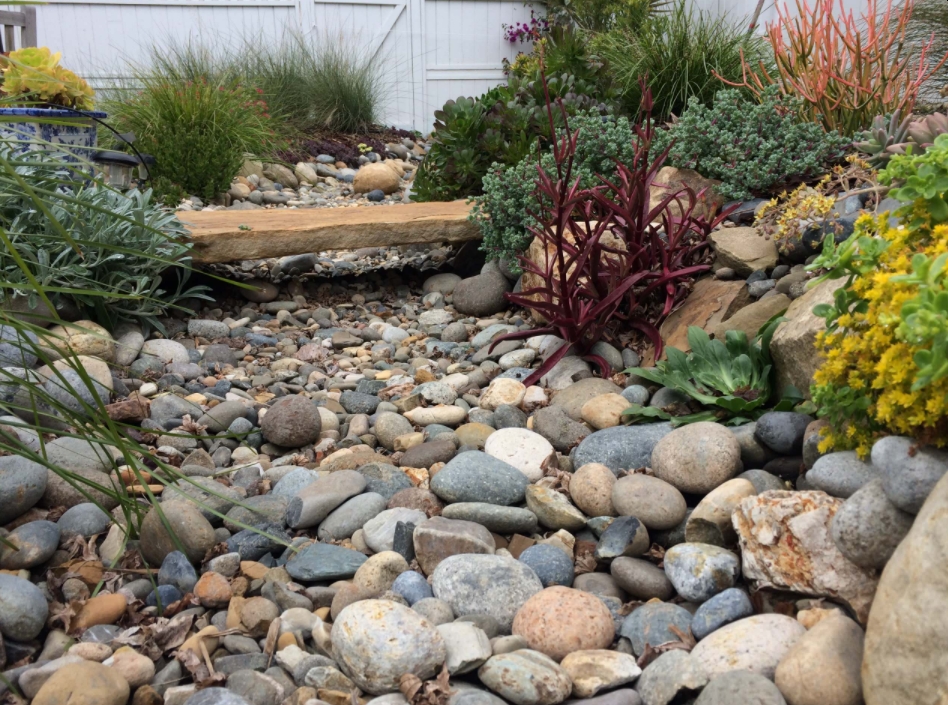There are many things you can do to your yard to make it look better, but let’s not forget the practical side of things as well. Ensuring that you have a proper drainage system in place is just as important as making things look nice.
In fact, you can’t have one without the other. If your yard is constantly being flooded and you can’t seem to keep it dry, then it won’t look nice, even with the best furniture and setting that you can imagine.
What Is A Swale Drain?
A swale drain or drainage swale is a broad, shallow ditch that is used to redirect water on a property. It is very similar to a french drain, which we’ve talked about before. Having a draining system in your yard is usually necessary.
The biggest difference between a french drain and a swale drain is that a swale drain has more uses. A french drain on the other hand is primarily for keeping water away from your house and protecting the foundation.
Why Use A Drainage Swale?

Swale drains have a lot of benefits and in some yards, they are almost necessary. They have all of the same benefits as any other drain you use for your yard, but let’s break down the particular purposes.
Irrigate Plants
Swale drains are often used to irrigate plants or gardens. You can use them for this exact purpose! They can carry water from any area in the yard and redirect it to your garden or crops, which will keep them watered without any effort from you.
Keep Water Away
This is the first thing people think of when they imagine using a drainage system, even a swale drain. A swale drain is a drain that can be used to keep water away from the house or another structure that can be damaged by it.
Reduce Flooding Potential
Come on, no matter how much you like water, you don’t want your yard flooded. It can cause structural damage but also, it’s really just annoying. Take care of any flooding by using a swale drain to reduce it.
Rainwater Reservoir
You can actually catch rainwater for many purposes in a reservoir by using a drainage swale. Just have the water redirected to that reservoir or pond for you to feed livestock or just to look pretty! It can be used for anything.
How To Build A Swale Drain

Building a swale drain isn’t difficult if you’re only looking at the labor. But knowing how to build one can be difficult. It’s recommended to have a professional help out, but if you feel up to it, you can do it yourself.
Step 1: Survey The Area
This is probably the most difficult part of building a swale drain. You need to plan out the drain and decide where you want the water to go and how you will make that happen. This really is a science.
If you’ve lived in the area for a long time then you probably have a good idea as to where the water gathers and where it needs to gather. Use this information to plan out the swale.
Step 2: Start The Swale
You can use rocks, wood stakes, or something else to mark the path the swale will take. It usually starts at a downspout or at a spot that water usually starts and near an area it needs to drain away from.
You need to plan the pitch at this point. Most of the time, you need the ditch to lower about one inch every ten feet or so. But it’s better if the slope is even steeper. Keep this in mind when marking the area.
Step 3: Start Digging
Now, you want to dig a couple of feet across for the entire way. The sides should be fairly slanted rather than go straight down. The water should naturally fall into the drain, not have trouble finding its way down.
Then as far as depth goes, this is debatable. That’s why it is best to start at the beginning and start sloping. Because of the necessary slope of the entire drain, you need to work from the beginning and keep on going deeper as you dig along.
Step 4: Start Layering
There are a few layers to a swale drain. It starts with a weed barrier. From there, you add a few inches of gravel. The end result should still have a low spot where you can see where the swale drain is.
This shouldn’t be low enough that it is dangerous. A couple of inches is usually fine. But don’t fill the area with dirt or sand, this will prevent the swale drain from operating correctly as it will clog the drain.
Step 5: Finish The Swale
Finish the swale drain by adding a top layer that you find appealing. You won’t be able to grow grass on the swale in most cases, but you can add sod if you like. That way you can enjoy the look of the swale.
If that doesn’t satisfy you then we have more tips to help you make your swale feel more like home. Let’s continue on to the fun part of designing a swale drain system. The top layer and surrounding landscape.
Making The Most Of Swale Drains

Although building your own swale drain is possible, it’s best to have a professional do it for you. That said, if you already have a swale drain in your yard, of course, it is best not to remove it. Swale drains are not to be messed with.
Instead, have a professional take a look at it and let you know if they can remove it or if you should leave it. If they say that it needs to remain then go ahead and make the most of your swale drain by using these tips.
Berms
Berms are mounds of dirt that raise an area of land. They are quite versatile. We have an entire guide on berms but what we are talking about today is how to use them with a swale drain in your yard.
For starters, since the swale drain goes down and the berms go up, this is a natural landscape to have. You can actually treat the sides of the swale drain like berms. Just make sure the water on the other side can still drain.
Walkways
If you do it right, you can either turn your swale drain into a walkway or you can put the drain on the side of a walkway. This works either way but only works as a walkway if the gravel is packed tightly and the swale is wide.
Otherwise, you’ll add it to the side of a walkway which will create a ditch. Be careful doing this as if the swale is too deep, it can be dangerous for children and the elderly to take the path. Ditches can be dangerous!
Trees
Trees are tricky, but most of the time, you can safely use them around swale drains. As long as the roots aren’t disturbed and do not disturb the swale drain, then you are good to use some landscaping trees.
This can even make the swale drain more appealing as it becomes more a part of the landscape. The end result is usually a woodland forest look that looks as if it is meant for fairies and elves to abide in.
Grass
Grass is a necessity for most yards, even a desert landscape. While you can’t plant grass on top of the swale drain, you can plant it around the swale drain to emphasize the stone used on top of the drain.
If you want grass on top then you should either use fake grass or sod. They both work well and can be removed if you need to adjust the drain at any time. Which may need to be done in order to keep things running smoothly.
Stones
Stones can be used to create a more unique look. Add them to the edges as you would a fire pit to create a gorgeous swale drain. Play with this idea and get creative. Make sure that water can get through the stones though.
Do not bury the stones, but lay them on top of the land so that the water can still drain. Otherwise, the water may pool on the stones which act as a dam to prevent water from draining properly. You don’t want this.
Dry Creek
A dry creek bed looks just like a creek only it doesn’t have water. It is also popular in a desert landscape. When it rains, the water will drain into the bed but it will look as if it is running for a while before making its way to the reservoir or drain field.
No matter what you decide to do with your new or old swale drain, keep in mind that having a functioning one is the most important thing. After that is taken are of you can move on to the fun of designing it.
The post How To Implement A Swale Drain appeared first on Home Decorating Trends - Homedit.



0 Commentaires